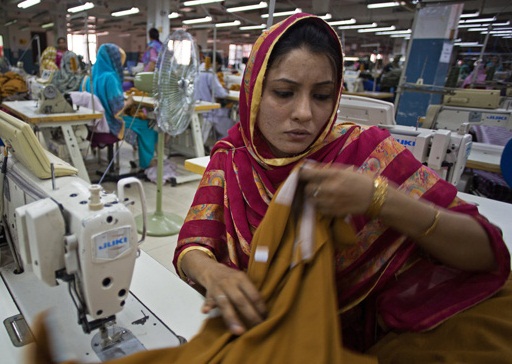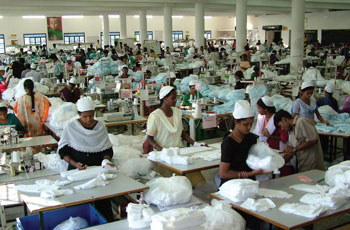"In 2014-15 textile exports rose to $13.8 billion which pushed up Pakistan’s total exports to more than $24 billion. Top global brands like Levi’s, GAP, Nike, Adidas, Jordache, Diesel, Polo to name a few are sourcing from the country. Pakistan’s lawn, bed linen and denim fabric have made a name worldwide."


Pakistan’s total production of cloth (mill and non-mill sector) rose from 8,524 billion sq. mt. in 2005-06 to 11,850 billion sq. mt. in 2014-15. The total fabric production of non-mill loom sector is more than 90 per cent. Thus, weaving capacity continues to enjoy a predominant position. Setting up of shuttle-less weaving machines has resulted in high growth of fabric production. The largest consumer of cotton yarn is supposed to be shuttle-less weaving sector, while the non-mill weaving sector contributes to exports by producing low quality sheeting fabrics.
Instead of making efforts to develop and modernise the weaving sector, the organised sector shifted to cotton spinning. Production of cotton fabrics in mill-sector increased from 915 million sq. mt in 2005-06 to 1,036 million sq. mt. in 2014-15, an average increase of 2 per cent per year.
There are about 700 textile processing mills in Pakistan and All Pakistan Processing Mills Association (APTMA) represents the organised finishing sector. The entire value chain from yarn to garments is covered by many of these mills, which are integrated units. These mills belong to different subsectors such as towels, bed linen, denim, knitted fabrics, and garments. The unorganised sector, with second hand machinery working under basic conditions, has more than 50 per cent of the total processing companies. These mills are spread all over Pakistan but a large number of them are in the Faisalabad area. They face issues of power availability.
Exports on the rise
Since 1990, exports of finished textiles have been growing. However, the industry has been shaken by trade restrictions based on environmental considerations in recent years. Due to lack of compliance with certain legislations in importing countries, certain exporters in the country have faced cancellation of orders.
Pakistan’s value-added textile products exports rose 7.5 per cent to touch $4.517 billion in 2014-15. Exports of readymade garments grew 10.5 per cent to reach $2.10 billion, and of knitwear raised 5.37 per cent to $2.42 billion compared to $2.29 billion during the previous year. Since many of the countries that enjoy the GSP status are not expected to fall in the GSP Plus group, Pakistan is in a position to export more to the EU on low duties.
In 2014-15 textile exports rose to $13.8 billion which pushed up Pakistan’s total exports to more than $24 billion. Top global brands like Levi’s, GAP, Nike, Adidas, Jordache, Diesel, Polo to name a few are sourcing from the country. Pakistan’s lawn, bed linen and denim fabric have made a name worldwide.












